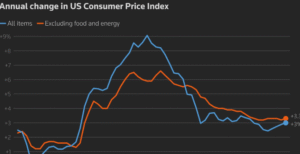$TAN $ENPH $FSLR
#China #Solar #RenewableEnergy #Overcapacity #OPEC #EnergyMarket #SolarIndustry #SupplyChain #Manufacturing #CleanEnergy #MarketManagement #GlobalEconomy
The largest solar equipment producers in China, including businesses that dominate the global supply chain for this sector, are now adopting strategic measures reminiscent of OPEC’s playbook to address longstanding issues of overcapacity and a resultant steep decline in product prices. The sector, over the past year, has faced significant pressure due to a glut of solar panels and related equipment in the market, driving prices downward and compromising profitability. OPEC, a cartel of oil-producing countries, has historically stabilized oil markets by controlling supply, and China’s solar giants are considering a similar coordinated approach. By limiting production volumes, these companies aim to restore balance to a flooded market and improve the pricing environment. This strategic pivot highlights the need for effective supply-side management in industries where demand may not keep pace with record production levels, despite broader adoption of clean energy solutions and sustained global interest in solar technology.
This shift comes as solar manufacturers globally are facing mounting financial strain. Throughout 2022 and 2023, solar panel prices fell considerably due to oversupply, pushing many manufacturers into loss-making territory despite continued strong demand for renewable energy projects. However, that demand has not grown swiftly enough to absorb the sheer volume of new capacity Chinese firms have added in recent years. This mismatch between supply and demand now demands mitigation measures to stabilize the market. Major players in the solar industry have been reluctant to move collectively toward curbing overcapacity until this point, emphasizing instead their ability to scale operations efficiently. Yet, the forces of market economics leave little room for such resistance as profitability shrinks further each quarter. Analysts now see the adoption of OPEC-style market management as a key experiment in bridging this supply-demand gap.
The potential impact of such measures on solar stocks and international markets could be profound. For investors, restricted supply and improved pricing power could lift margins for prominent solar firms, potentially providing relief to shareholders who have seen stock values erode over the past year. Exchange-traded funds such as $TAN, which track solar firms, may find particular benefit if leading Chinese producers execute these strategies effectively. However, the move also raises questions of market monopoly, pricing power, and the balance between short-term financial health versus long-term industry accessibility. Smaller manufacturers could suffer disproportionately if scale becomes the determining factor for survival in an environment managed by the largest players in the sector.
While solar energy promises a critical role in the global green transition, this episode showcases the inherent risks of overreliance on one country for supply chain components. China’s dominance in the sector gives its firms significant influence, paralleling the stronghold OPEC enjoys in the oil market. This underscores the need for market diversification and alternative sources in the renewable energy supply chain to minimize systemic risks for stakeholders reliant on stable panel prices and predictable project costs. Financial markets are expected to monitor the execution of these strategies closely, with significant moves in renewable energy indices likely in the months to come. As the industry works to balance profitability with growth, the outcomes will provide important lessons for other sectors navigating the complexities of modern, globalized supply chains.










Comments are closed.